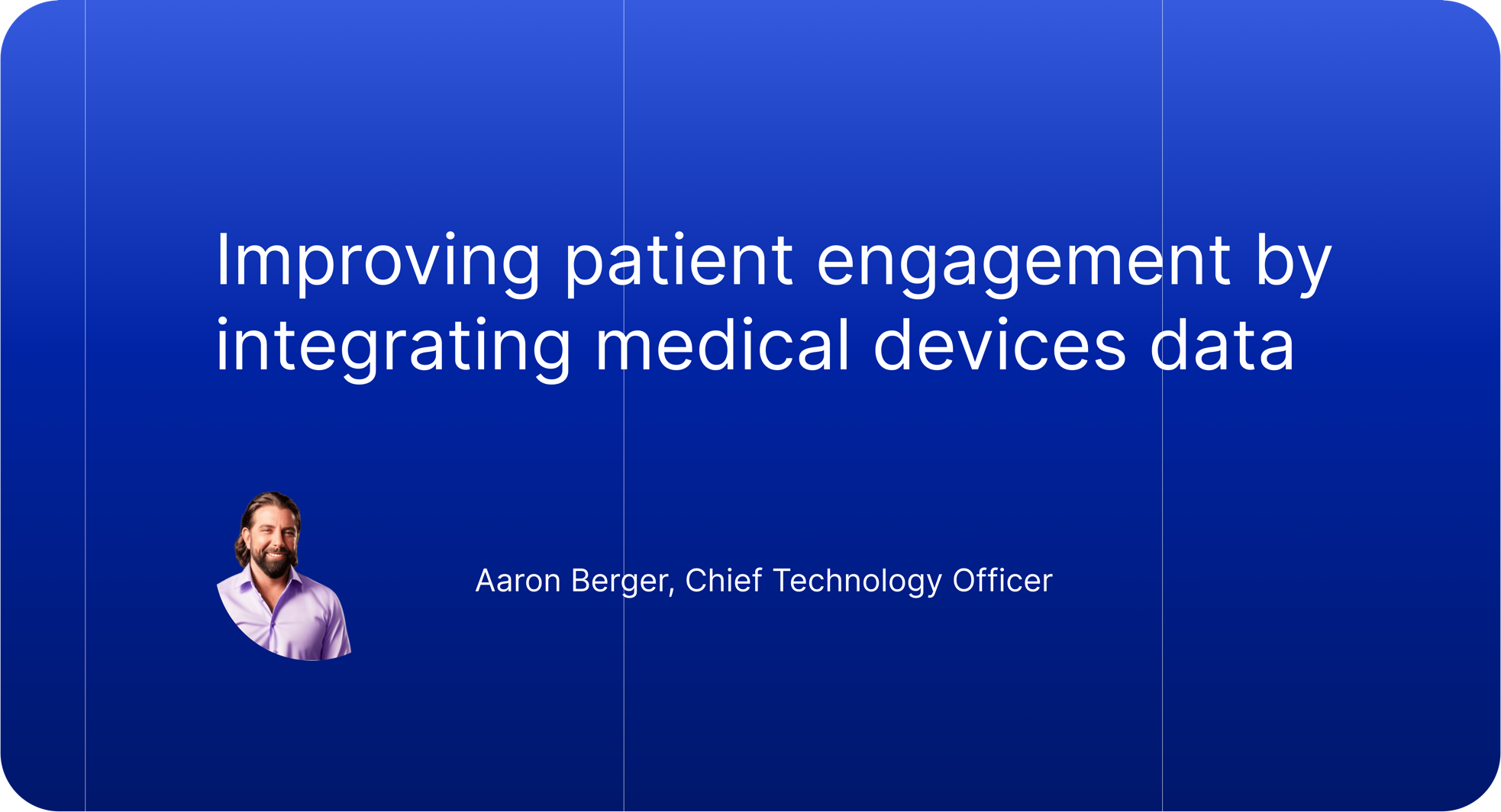Overview
Medical device data integration has become a pivotal element in patient care, introducing an era where healthcare providers and patients can access information in real time. In the past, healthcare professionals depended mostly on in-person appointments to obtain health data. This made it difficult to spot subtle changes in a patient’s condition between visits. Today, continual data streams from connected devices are closing those gaps and expanding patient engagement possibilities. By capturing day-to-day health metrics, these tools add depth to the traditional picture of patient well-being and support more personalized interventions.
Transitioning from conventional medical care to digital involvement
In the past, direct, in-person interactions between patients and healthcare providers were the main factor driving patient engagement. The foundation of both treatment plan compliance and general patient satisfaction was these interactions. Digital health tools, on the other hand, have completely changed this dynamic by putting the emphasis on ongoing, data-driven interactions rather than episodic care.
Conventional healthcare was built around intermittent interactions, where patients typically engaged with clinicians only during scheduled checkups or emergencies. This approach left substantial periods of unmonitored time, placing the onus on patients to keep track of symptoms in the interim. Advancements in digital health tools have changed that dynamic. Remote monitoring devices now feed critical information directly into electronic systems, alerting clinicians to issues before they escalate. This continuous flow of insights fosters a closer, more interactive relationship between care teams and patients, even outside of hospitals and clinics.
For instance, patient engagement has greatly increased with the use of continuous glucose monitors (CGMs) in the management of diabetes. Research indicates that patients who use CGMs as opposed to those who rely on conventional monitoring techniques have better glycemic control and are more likely to follow their treatment regimens.
Important developments for connected care
The evolution of connected care is being propelled by several key trends, with machine learning (ML) and artificial intelligence (AI) at the forefront. Large data sets are analyzed by these technologies to find patterns that might otherwise be missed, resulting in earlier diagnosis and more individualized treatment regimens. Another trend that is extending the reach of healthcare services outside of traditional settings is telemedicine. Integrating healthcare data is necessary for telemedicine to be successful in providing individualized remote care.
Several developments have accelerated the adoption of connected healthcare. One is the increasing prevalence of artificial intelligence (AI) and machine learning, which help analyze vast amounts of patient data to identify trends and predict potential complications. Another factor is the swift expansion of telehealth and remote consultations, which saw rapid uptake during the COVID-19 pandemic. Together, these changes support a more personalized approach to patient care. Instead of relying solely on broad clinical guidelines, providers can tailor treatment plans based on individual health patterns captured by wearable sensors, home-based medical devices, and other data inputs.
How including data from medical devices improves patient involvement
Integrating medical device data has proven to be an effective way to increase patient involvement. Individuals gain immediate feedback about their conditions, enabling them to understand how lifestyle choices, medications, or other factors influence their well-being. A diabetes patient with access to continuous glucose monitoring results, for example, can quickly adapt meals or activities to maintain healthier blood sugar levels. This approach increases a sense of accountability and empowers patients to take part in decisions about their care, rather than passively following instructions from clinicians. Over time, that sense of ownership can boost adherence to treatment regimens and contribute to better health outcomes.
One excellent example of this is the ability of wearable cardiac monitors to track heart rhythms and notify medical professionals of possible arrhythmias, allowing for early intervention and averting major consequences.
Economic and clinical benefits of device integration
Healthcare providers benefit as well when they incorporate medical device data into care plans. By tracking fluctuations in patient status around the clock, clinicians can address issues early and avoid unnecessary hospital admissions. This shift from reactive to proactive treatment can result in significant cost savings. Studies have shown that patients who rely on connected devices often experience fewer complications, shorter hospital stays, and less frequent readmissions. As healthcare systems worldwide wrestle with rising expenses, this approach offers an avenue to limit costs without compromising on the quality of care. When patients remain stable at home instead of occupying inpatient beds, resources can be allocated to individuals with more critical needs.
Obstacles and considerations in merging device data
Despite its advantages, integrating medical device data into larger healthcare systems comes with certain challenges. Ensuring that patients’ private health information remains secure and compliant with data protection laws is a complex undertaking. Hospitals and clinics must implement strong cybersecurity measures and navigate regulations that vary by region, which can be resource-intensive. There is also the issue of interoperability. Different device manufacturers often use different data formats or communication protocols, making it difficult to create a unified patient record. Overcoming these interoperability hurdles requires collaboration among technology providers, regulatory agencies, and healthcare organizations.
Effect on cost-effectiveness and health outcomes
Increasing patient engagement and improving health outcomes are two benefits of integrating medical devices with EHR/EMR systems. Having a comprehensive understanding of the patient’s health allows healthcare providers to make more informed decisions. This integration also facilitates the transition from reactive to proactive care, i.e., addressing potential health problems before they become more serious. This strategy lowers overall healthcare costs by reducing the need for emergency care and hospital stays, while also improving patient outcomes.
According to a JMIR Medical Informatics study, patients with heart failure in particular who used connected devices had a 30% lower rate of readmissions to hospitals, underscoring the potential cost savings associated with medical device integration.
Integration of medical device data presents challenges
Medical device data integration has many advantages, but there are drawbacks as well.
Compliance and Data Security: It’s crucial to make sure that laws like HIPAA are followed. The complicated regulations controlling patient data security, collection, and storage must be negotiated by healthcare providers. Patients’ trust may be lost and there may be harsh penalties for data privacy violations.
Scalability and Interoperability: The amount of data generated rises along with the number of medical devices. Scalable healthcare systems are necessary to manage this surge in data without sacrificing quality. Devices from various manufacturers may be able to communicate with EHR/EMR systems without any problems thanks to interoperability.
A major obstacle to reaching true interoperability is still the absence of standard protocols for data exchange between various systems and devices.
Benefits of patient empowerment in the long run
Long-term health and wellness are greatly impacted by the integration of medical device data, even beyond the immediate health management context. Patients who have constant access to their medical records are better able to make educated choices and take preventative action. Health outcomes improve over time as a result of the cooperative relationship that this empowerment fosters with healthcare professionals. It is impossible to overestimate the advantages of feeling in charge of one’s health for mental well-being. Engaged patients have a higher chance of making healthy lifestyle choices and sticking with them over time.
Where is the connected healthcare heading
Integrating data from medical devices will continue to be a vital component of connected care as the healthcare sector develops. Even more breakthroughs are anticipated in the future when proactive and individualized care models will become the standard. Businesses that offer platforms with the security, scalability, and interoperability required to meet the challenges of data integration, such as Galen Data, are setting the standard.
The future of connected healthcare seems poised for further innovation, with a focus on expanding data analysis and refining personalization. Machine learning algorithms already assist in anticipating health events, and as these technologies mature, they will likely become more predictive. Integrations with electronic health records will also streamline workflows, making it more routine for a cardiologist or primary care physician to review real-time device data.
The increasing availability of telehealth options will be supported by cloud-based platforms that securely store and analyze patient metrics, facilitating more effective home-based treatment. Integrating medical device data promises to strengthen both patient engagement and clinical decision-making, allowing healthcare systems to deliver more patient-centered, efficient care.

